- Administrator
- Albums and Singles
 The duo of former Creation is Crucifixion members Ryan Unks and Nathan Berlinguette sure do present a grim outlook with this one. Combining their efforts, the two concoct an immense black hole on this, the moniker's second full-length (the first featured only Unks). Meshing dark ambient, metal and drone, the resultant sound is both apocalyptically shaded throughout, a detailed and dense look on the sounds of an end.
The duo of former Creation is Crucifixion members Ryan Unks and Nathan Berlinguette sure do present a grim outlook with this one. Combining their efforts, the two concoct an immense black hole on this, the moniker's second full-length (the first featured only Unks). Meshing dark ambient, metal and drone, the resultant sound is both apocalyptically shaded throughout, a detailed and dense look on the sounds of an end.
Considering the album's consistently dour landscape, the tracks presented are actually quite distinct, giving the disc an air of organic and genuine feeling rather than seeming coaxed from the grasp of some preconceived stylistic genre. Instead, the opening "Progress" broods forward with foreboding expanse of black drone interspersed with sharp cries and metallic clatters. The infused effect is one of a sonic representation of the post-apocalyptic industrial wasteland, barren and cold.
The two-part "Mores" begins with a steady and quite gentle drone that gradually continues its descent into foreboding fan belt textures and a thick bass pulse. The explosion opening the beginning of the second part is as dense as anything presented here, as grinding drones and shard-like vocals emerge from the buried background. The production, with the vocals set far back amongst the murk, makes the effect that much more frightening and isolated.
"Aspiration" opens with a scream and a drone atop a light organ line, easily the fairest sound presented on the album. The eerie effect of this heavenly sound being beaten again and again pretty much dissolves the hope of any uplifting conclusion to the disc, though to be fair that was pretty much clear from the get-go. Sprawling along, the piece is a monster of punctuated dissolution, a truly grimy realization of the fight between light and dark, with dark obviously taking the upper hand. Still, the dialogue remains an interesting one throughout, as the two present themselves in continuous, almost harmonious opposition, never quite giving in completely either way.
The approach is ultimately a far more densely orchestrated one than most acts forging similarly dark soundscapes. The other two-part piece here, "Denial," moves with patient poise, beginning with a soft and angelic vocal hum emitted into the haze from the belly of some secret cave. Moving cautiously forward, each sound presents itself with care, contributing to the ever-evolving shape of the work as a whole. It may represent a dark chaos, but it is achieved through highly human ends.
The closing second part seals the casket for good however. Thick guitar squall and vocals (again--perhaps too consistent throughout the album to remain as entirely damaged as initially appearing) create a dense blanket of violent energy that seeps outward in toxic dispersion. Yet this too quiets slowly into an unclear and unanswered end, leaving more questions than answers on this consistently ambiguous record.
samples:
Read More
- Administrator
- Albums and Singles
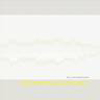 Using shortwave radios to pull sounds out of the ether has been a longstanding tradition in experimental music. Karlheinz Stockhausen and John Cage were perhaps the first to explore this area, fascinated by the possibilities inherent in using the radio as an instrument. It is often left to a second generation of explorers to further develop the discoveries made by the first trail blazers. In 1982 William Basinski carved out his own territory in the worlds of shortwave sound with nothing more than a receiver and his trademark loops of tape. First released on Noton as an LP in 1997, it has been made available once again, this time on compact disc from Basinski’s own label.
Using shortwave radios to pull sounds out of the ether has been a longstanding tradition in experimental music. Karlheinz Stockhausen and John Cage were perhaps the first to explore this area, fascinated by the possibilities inherent in using the radio as an instrument. It is often left to a second generation of explorers to further develop the discoveries made by the first trail blazers. In 1982 William Basinski carved out his own territory in the worlds of shortwave sound with nothing more than a receiver and his trademark loops of tape. First released on Noton as an LP in 1997, it has been made available once again, this time on compact disc from Basinski’s own label.
Shortwave radios are easy to find and relatively affordable. They emit whole slews of interesting sounds, all with an element of indeterminacy: it is hard to know what will be picked up by the antenna, giving the process of using one musically a nebulous mysticism. Scanning the dial turns up bits of Morse code, the rapid pulse of telemetry, fragments of newspeak rendered in foreign languages, muzak broadcast from halfway across the world. No wonder it has had and continues to have so much appeal for musicians.
The songs Basinksi has crafted on this album make for some of his most brilliant and memorable excursions. Listening, I picture him as an explorer of invisible worlds. From the comfort of his terrestrial abode he scries the airwaves amidst endless spools of tape as shrill alien sounds emanate from the radio. The disc is bathed in a resplendent otherworldly glow, emerging from the warm static of buzzing transistors and delicate white noise. The five pieces are very somber, very soothing and calming to the enervated mind. The disc is sequenced in a way that shows a gradual refinement, as if at a certain moment, the élan vital behind what he was trying to capture made itself manifest through the ether and the reel to reel, happily recording, was able to capture it.
“Evening Scars” opens the album with a lush orchestral phrase. Joined by the warbling oscillation of the radio receiver caught fluttering between stations; the two sounds intertwine around each other in a fine tuned balance. This is the perfect noise for washing the body with after a tiring day of work. The slight fades between songs are nearly imperceptible, even though clearly demarcated. Like the steps of a spiral staircase, each song elevates the mind to a new level of musical ecstasis. Thus “Cobalt Pools” flows seamlessly into “Fringe Area,” a dark and icy piece that captures the vicissitudes often accompanying contact with praeterhuman intelligence. Which is what I feel Basinski is doing in these songs: reaching beyond the void of space and time, listening for signs of nonhuman life, and making contact. Whenever this album is played, it is as if some subtle, metaphysical information is being imparted. As such, “On a Frontier of Wires” is the most profound revelation contained. Veiled female voices whisper in lulling sibilants from behind the magnetic cacophony. And like his Disintegration Loops, the voice gradually fades, decomposes, and falls apart. A recurrent series of notes, like a detuned angelic horn, rings its siren call throughout the near 24 minutes of the song. As with all great exercises in minimalist repetition, it never loses its welcome, and becomes familiar as a well loved mantra. “Particle Showers,” which was not released on the original LP version, makes for a nice come down from the bliss that was felt on the previous tracks.
These experiments formed the basis for the working methods Basinksi would later exploit on his 90 minute shortwave magnum opus, The River, and showcase the musical studies that would make it possible. Nothing short of masterworks themselves, these studies are testament to a bright musical mind.
samples:
Read More
- Administrator
- Albums and Singles
 After an entire decade of incendiary live shows and roughly a billion releases of varying quality, this West Coast noise supergroup finally stepped into a (proper) recording studio. Unsurprisingly, this new experience did little to diminish their spazzy, entropic intensity.
After an entire decade of incendiary live shows and roughly a billion releases of varying quality, this West Coast noise supergroup finally stepped into a (proper) recording studio. Unsurprisingly, this new experience did little to diminish their spazzy, entropic intensity.
Green Tape /olFactory /Lost Treasures of the Underworld /Tanzprocesz
Gang Wizard is a band with ever-shifting membership, but they can reliably be depended upon to feature dissonant guitars, abrasive electronics, some guy shouting and ranting, and a drummer. They cannot, however, be depended upon for unimaginative conceits like structure, rhythm, melody, or coherence. In the past, they've been favorably compared to Throbbing Gristle, Dead C, and "the next logical extension of Black Flag" and for good reason: Gang Wizard exhibit a feral and unhinged nihilism that bring some much needed danger and unpredictability to the experimental music scene. They also show a knack for impressively ambitious album titles (and for managing to get four separate record labels to band together to release an abrasive noise album).
"Whoever Invents" commences the proceedings with dissonant guitar scratching coupled with deep electronic oscillations. A ride cymbal keeps time as squalls of rumbling noise build to an escalating unholy din until the tension finally subsides into an almost calm spoken word interlude. Of course, that calm is ephemeral, as the vocals gradually become more maniacal and cathartic as electronics whir and buzz around them. Eventually, form and nuance is disposed of entirely and the track culminates in a spastic freak-out.
"Bad Teacher" begins with electronic bleeps and blurts, seemingly random guitar squonks, and some vocal caterwauling. It all seems very arbitrary, but the free-form drumming and thick low-end oscillations give it a visceral inertia that ultimately coheres into a groove of sorts. As with he first track, there is eventually an oasis of calm amidst the ugly maelstrom: the guitars drop out and leave only queasy organ and some rambling incoherent vocals. Gradually, a gathering storm of electronic squiggles and pulses forms around the meandering wreckage while the low-end rumbles rise and plunge. The atmosphere becomes increasingly disquieting before fading out in a surprisingly intentional-sounding and dignified fashion.
The second side of the album consists solely of one amazing lengthy piece ("Why Pharaoh Hanged the Baker") which begins with a great deal of throbbing, rumbling, chittering, and squelching. That doesn't change much for a while, but it certainly becomes more intense and could reasonably be described as "power electronics". A stomping kick drum eventually blunders into the sound blizzard, as do some distant distorted vocals. Eventually, the chaos ebbs into a surprisingly restrained and otherworldly interlude before the drummer gets a bit more ambitious and some odd mantric vocals spur a renewed swell in intensity. By the time it ultimately fades out with some gurgling white noise and a two-note drone, it seems as though the band knows exactly what it is doing.
This release is vanishing quickly, although Deathbomb Arc (run by band member Brian Miller) seems to be a consistent repository for the endless and multifarious Gang Wizard oeuvre. Regardless, you can rest assured that there are scores of other ones out there of varying quality and half-assedness (Thurston Moore put one out on Ecstatic Peace, while another one was recorded in the bathroom of a club). However, it seems unlikely that a mere recording can hope to approximate what Gang Wizard must be like live: they sound far more like a fire or an earthquake than a band.
Samples:
Read More
- Matthew Spencer
- Albums and Singles
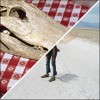 As part of the spilt series by the Baltimore label Wildfire Wildfire, this single gives two exciting examples of fluid electronic songcraft. By different means, both groups evoke feelings of retro-futuristic goodwill by combining digital composition with analogue musicianship.
As part of the spilt series by the Baltimore label Wildfire Wildfire, this single gives two exciting examples of fluid electronic songcraft. By different means, both groups evoke feelings of retro-futuristic goodwill by combining digital composition with analogue musicianship.
 
For a band, nothing can be more fruitful, or more dangerous, than attempting reinvention with every release. While constant change can be a sign that a group lacks basic aesthetic principals, there are a few that can maintain a distinct personality through every genre they work in. From the drum-less punk of their debut Freckle Wars to the shimmering guitar-scapes of last year's Way, Ecstatic Sunshine has become one of those groups. Now playing solo under that moniker, group founder Matthew Papich has used the recent shakedown to concentrate on guitar and electronics in equal measure. Even when his instrument is heavily processed, Papich's guitar tone has a bright, crystalline clarity. On "Easy is Right" he plays a simple, echoing riff that serves as base for obtuse, seemingly random synth tones. The bright, taffy like globs of sound push themselves into the foreground, threatening to but never burying the underlying guitar. The song drifts pleasantly along, undulating in pitch until the each sound element is gradually unraveled.
On the flip-side, "Take Turns" by Lucky Dragons is much more muted and organic. The song begins with a simple melody plucked out on a thumb piano. After a few measures, the notes quickly pile on top of each other, snowballing into pentatonic, gamelan like arrangements. Shakers, mouth trumpet, and muted voices join in the chatter. The song feels like some animistic rain-chant, but it never becomes raucous or loose. Each instrument stays firmly rooted in its pre-programmed position. What’s exceptional is that were it not for the artificial precision of the playing, you would never know the song was constructed electronically.
What unites the two songs is creative use of electronic instrumentation. Rather than letting their working methods determine the aesthetics of their music, the two artists use their tools in unexpected ways. Solo guitar music can be overly sober and technical, but Ecstatic Sunshine makes it bright and relaxed. Lucky Dragons so successfully blend native instruments that the whole process sounds natural. Though this single is a brief entry in each band’s catalogue, it neatly condenses what is appealing in both.
Read More
- Administrator
- Albums and Singles
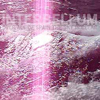 Brendan Burke and Fred Lonberg's quiet, unassuming debut on Flingco Sound flirts with the conventions of both glitch and chamber music, though it obviously favors the latter. Composed primarily of piano and cello performances, Over All of Spain... is a beautiful and mostly pastoral record fleshed out by the minimal use of samples, loops, and other odd sounds.
Brendan Burke and Fred Lonberg's quiet, unassuming debut on Flingco Sound flirts with the conventions of both glitch and chamber music, though it obviously favors the latter. Composed primarily of piano and cello performances, Over All of Spain... is a beautiful and mostly pastoral record fleshed out by the minimal use of samples, loops, and other odd sounds.
Flingco Sound
More than anything else, Interbellum's music reminds me of a sonata for piano and cello. It is essentially one long piece divided into distinct movements, all of which center around the 21 minute song, "The Life and Death of Anne Zimmerman." Each of the seven pieces move in a natural way and develop out of one another effortlessly. They are characterized by deep moments of silence and dense stretches of sound, all of which express a yearning for something just out of reach. Just minutes into the album a great sense of loneliness emerges from the music, which develops into a romantic image of a life lived in solitude. Whether or not it was the band's intent to develop such an image isn't clear, but the cinematic development of the record is perfectly suited for such a narrative.
Lonberg's cello performance is marked by long, sensuous notes and hints of melodrama. When he draws his bow across the strings the sound is like a breeze coming out of the speakers on a hot day. It is gentle and light, but very pleasing. Burke's piano technique is, on the other hand, punchy and full of weight. He does not provide rhythm or a tonal center so much as he dots the I's and crosses the T's. His playing lends something of an ambient tone to the music. He often keeps his foot on the sustain pedal of his piano, allowing the chords to ring out almost undetected in the background. When silence or near-silence falls on some of the songs, those notes can be heard humming softly in the background. The tastefully employed samples found throughout the record further emphasize the ambient dimensions of the record. While many of the samples feature distorted or distant conversation, some songs benefit from atmospheric effects and light distortion. Both "Mansfield, Louisiana" and "6EQUJ5" feature essential, non-traditional sounds. While the cello and piano melodies anchor every song, neither of these pieces would be the same if it weren't for the bits of sound effects and buzz that accompany them.
Calling this a glitch-chamber hybrid is probably a little too misleading, though elements of both are obviously present. Anyone expecting Kid 606 meets Brahms is going to be severely disappointed. It is, however, a highly impressionistic record that utilizes modern techniques in small doses for maxium effect. The album's freeform aesthetic also happens to be its biggest flaw. The record develops naturally and smoothly, something that fits its demeanor perfectly, but as a result there are portions of the record that drag on a little too long. "The Life and Death of Anne Zimmerman," while very pretty, could've benefitted from some editing. It's epic scope is impressive, but the lack of instrumental diversity makes it a bit tedious at times. Were the album to have a little more propulsion behind it, it would be far easier to pick up and enjoy. As it stands, listening to Over All of Spain... requires a little bit of patience; once its logic settles in, it becomes easier to appreciate all its little nuances. It isn't likely to register on many ultra-hip radars because it's almost completely divorced from all the stylings that make for an ultra-popular record. But, that's just one of Interbellum's strengths. Over All of Spain... is 100% unique and free from any preoccupations with familiar techniques or tired fads. Based on this record alone, Interbellum is a project like few others I can name.
samples:
Read More
- Administrator
- Albums and Singles
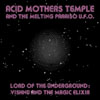 Kawabata Mokoto and his spacey pals have dispatched another communiqué of shambling kitchen-sink psychedelia from whatever mental place they currently inhabit. As is often the case with this band, I am left scratching my head and wondering whether Kawabata is a genius or a charlatan (or both).
Kawabata Mokoto and his spacey pals have dispatched another communiqué of shambling kitchen-sink psychedelia from whatever mental place they currently inhabit. As is often the case with this band, I am left scratching my head and wondering whether Kawabata is a genius or a charlatan (or both).
I used to be a fairly devoted Acid Mothers Temple fan, but I stopped buying their records a few years back because they all started to sound the same to me. Occasionally, an album would stand out as particularly great (La Novia, for example), but many releases seemed like interminable half-baked jams that had swooping and burbling synths piled on to make them "trippy." Of course, Kawabata has a singular knack for twisting seemingly uninspired pseudo-krautock jams into kaleidoscopic supernovas of weirdness, so I could never completely dismiss them. Regardless, it's been a while since I've last checked in and Lord of the Underground... shows me little has changed (for better or worse).
The opening track ("Eleking the Clay") begins rather deceptively with some droning organ before launching into something that resembles a crazed Turkish folk music ensemble that has been handed electric instruments and dosed with LSD. The galloping central riff is rather intricate and cool, but the song's frenetic tempo and absurd hooting vocals make it extremely hard to take seriously. However, the song gradually becomes less and less of a ridiculous caricature of some vague ethnic folk tradition and instead becomes increasingly purposeful and impressive as Kawabata's studio tweaking steers it into a lysergic black hole. The main riff remains relatively unchanged, but all hell breaks loose around it as a spacey analog synth solo unfolds. The tempo continues to increase until even the backbone riff collapses and only a wake of sculpted chaos is left.
Unfortunately, that incandescent flameout is followed by "The Sorcerer's Stone of the Magi," which is decidedly not the band's finest hour (or best song title). Written by bassist Atsushi Tsuyama, this piece is conspicuously different from the rest of the album in being minimal, acoustic, and folky. However, it still features the Mothers' omnipresent electronic ambiance, which sounds anachronistic and tacked-on in this context. Alien8 described this track as "a gentle piece of outsider folk," and that may be so, but its formlessness and mumbled, warbling vocals consistently confounded my repeated attempts to enjoy it. It is mercifully brief though.
The final track is the album's namesake and presumed centerpiece and it covers a lot of territory over the course of its 25 minutes. It begins with some heavily reverbed guitar noodling, sitar, and wordless vocal whooping, growling, and laughing...and, of course, the inescapable trippy swooping electronics. After more than three minutes, the bass and drums finally cohere into a languid groove, which provide a solid foundation for the...ahem...lengthy kazoo solo that follows. Gradually, the drums pick up the pace a bit and the lead guitar becomes more pronounced (there's still more kazoo though). Notably, by the time the song reaches even this minimal degree of progression, roughly ten minutes have elapsed. Thankfully, the next 15 minutes is devoted to a somewhat inspired freak-out: the drums continue to speed up, the bass gets louder and busier, layers of electronics and wah-wah guitars are piled on, and Kawabata artfully mixes it all into some characteristically explosive mind-bending chaos. There are some spectacular moments lurking within the resultant maximalist maelstrom, but this track could have been an unqualified brilliant success if some liberal editing had been undertaken.
Amusingly, my first reaction to this album was exasperation and visceral hatred, but after listening to it several more times, I have decided that it is not a bad album at all when taken on its own merits. Perhaps even good, as I suspect I would've been very impressed if this had been the first AMT album I had ever heard. That said, Lord of the Underground absolutely cannot withstand close, sober scrutiny and suffers greatly from predictability and a meandering lack of focus when compared to the Mothers' previous works. Of course, Kawabata's stated artistic intention is merely to create "extreme trip music" and he has done so rather decisively here. I just wish he would surprise me a bit more often.
Samples:
Read More
- Administrator
- Albums and Singles
Please visit the site to hear previews and order.
LIMB is an archival release of experimental and minimalist compositions recorded from 1980-1983, from the early days of Foetus and pre-Foetus. Though the material is largely unreleased, some of the pieces have been previously released on the compilation albums by Coil and United Dairies. Some were excavated and some of it was reconstructed or re-edited from compositions on cassette. One piece is constructed from an organ part written in 1982, which JG took the liberty of finishing in 2008. These pieces were made before the introduction of MIDI and sampling technology. It shows the lineage and genesis of some of the methods that JG is working in today.
If you like JG's work as Manorexia, you'll dig this album.
LIMB is released as a deluxe double disc package. The music disc contains 12 tracks at 18+ minutes with an additional 20 minute bonus mp3 track.
On the second disc, director Clement Tuffreau kindly allowed us to include his 2005 documentary about JG Thirlwell, NYC FOETUS, with this package. The eighty minute film features interviews with JG Thirlwell, Matt Johnson, Alex Hacke (Einsturzende Neubauten), Michael Gira, Richard Kern, Lydia Lunch, Martin Bisi and Elysian Fields along with a lot of never before seen footage of Foetus, Steroid Maximus, Manorexia and more. There is also with 45 minutes of bonus extras,comprised of Steroid Maximus 18 piece ensemble live in France, Foetus live in Hannover, Manorexia live at The Stone NYC and a snippet of JG's LEMUR commission at 3 Legged Dog in NYC. The film is subtitled in French .
This deluxe package also contains a 48 page perfect bound book with minimal designs by JGT (all in his signature red, white, gray and black palette).
This is all held in an attractive sturdy plastic slipcase printed with another of JG's designs.
LIMB CD
01. Sick Mins (Ectopic Version) 8'39"
02. Ezekiel's Wheels 1'38"
03. Te Deum 4'18"
04. The Anxious Figure 4'03"
05. Primordial Industry 6'12"
06. Industrial Go-slow 3'37"
07. That We Forbid 2'49"
08. Sjogren's Syndrome 7'17"
09. Echolation 1'22"
10. TO45 tag 1'37"
11. Piano Piece 4'03"
12. The Caterpillar Kid 5'52"
plus bonus track (mp3 file)
You Have To Obey 20'00"
LIMB DVD
NY Foetus
A documentary about JG Thirlwell by Clement Tuffreau
+ many bonus extras of Steroid Maximus live, Foetus, Manorexia, LEMUR and more!
Read More
- Administrator
- Albums and Singles
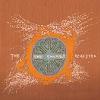 The latest album from Daniel Padden's One Ensemble sees the group expand to a seven- piece, the extended line-up extending the range of the music in the process. The blurring of many folk styles with elements of improvisation should come as no surprise to those familiar with this group's previous output but the unexpected span of textures and focus of energy bring the music onto a new trajectory.
The latest album from Daniel Padden's One Ensemble sees the group expand to a seven- piece, the extended line-up extending the range of the music in the process. The blurring of many folk styles with elements of improvisation should come as no surprise to those familiar with this group's previous output but the unexpected span of textures and focus of energy bring the music onto a new trajectory.
Instead of using the group as his solo vehicle outside Volcano the Bear, Padden has begun releasing albums under his own name and letting this group develop its own voice. This loosening of the reins over the last couple of albums has seen The One Ensemble mature as a group, going from being simply a great band to a great band that seems to have ideas about becoming even better. Padden’s stamp is still apparent; on “The Beacon” the melody is very much what would be expected of him. The eastern European and klezmer influences that run through The One Ensemble’s music are even stronger on Other Thunders with pieces like “The Vapour” sounding like they could belong on one of Tzadik Records’s Radical Jewish Culture releases.
Yet elsewhere his role as captain of this vessel seems to be nominal only as the other players push The One Ensemble into strange waters. “The Instructions” has more in common with Volcano the Bear than Padden’s solo work in terms of structure but the mood brings to mind the disturbing formlessness of Limpe Fuchs and her group Anima. This otherworldly feeling dissipates with the “The Sun” whose mostly vocal structure has a tribal and ritualistic vibe to it, the previously encountered alienation of “The Instructions” making these human voices all the more compelling.
This mix between Padden’s vision and group experimentation makes all the individual pieces on Other Thunders into superb miniatures but overall it stops the album coming together like the earliest One Ensemble albums. However, instead of fracturing under the weight of its variety, Other Thunders instead revels in its multiple personalities. So while it may not beat Live at VPRO as my favourite One Ensemble album, it comes close and judging by the direction the group are taking on the last two releases, it will not be long until I have a new favorite.
samples:
Read More
- Administrator
- Albums and Singles
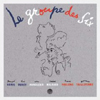 An extensive double disc collection documenting the output of six French tutees of Erik Satie and Jean Cocteau, this album is a near necessity in any cohesive understanding of France's musical environment in the interim between World Wars. Comprised of Georges Auric, Louis Durey, Arthur Honegger, Germaine Tailleferre, Darius Milhaud and Francis Poulenc, "Les Six" forged an approach generally marked by spare concision, a response to the flowery output of the Romantic and Impressionist tendencies of composers such as Wagner and Debussy.
An extensive double disc collection documenting the output of six French tutees of Erik Satie and Jean Cocteau, this album is a near necessity in any cohesive understanding of France's musical environment in the interim between World Wars. Comprised of Georges Auric, Louis Durey, Arthur Honegger, Germaine Tailleferre, Darius Milhaud and Francis Poulenc, "Les Six" forged an approach generally marked by spare concision, a response to the flowery output of the Romantic and Impressionist tendencies of composers such as Wagner and Debussy.
Their response, as is suggested in the relatively brief but informative liner notes, was closely linked to their teachers' approaches. The first disc, which mostly presents a series of miniatures from the group, displays an overarching tendency toward the kind of spatial melodicism for which Satie was a major proponent. Auric's "Prelude" opens the disc with a small and whimsical piano work who's dainty moves are at once simple and intricately emotive.
This approach would garner much attention and, though many of these musicians would not be heard from in a wider circle, the Parisian associations are unavoidable when listening to any of this material. In fact, so singular is the sound that one piece flows into the next as if they were written as such, with the second track, Durey's "Romance sans paroles," flowing perfectly from the first with an even more uncluttered sound.
This neo-classical approach is largely best exemplified by the piano pieces, which take up the majority of the first disc, as these allow for the clearest grasp on the work. Milhaud, perhaps the best known of the six people featured here, is marked by a fluidity on "Caramel mou" that moves from mood to mood at a moment's notice without ever losing sight of a certain bar room pulse and energy. Poulenc's gentle "Huit nocturnes" flit atmospherically about with little pretension and a careful respect for each note. With such being the case, it is perhaps inevitable that many of these pieces are infused with an admiration for the silences between each note, infusing each piece with an almost reverential simplicity of cause.
In stark contrast to the first disc's 22 pieces, the second presents only three. Milhaud's "La Création Du Monde" is a ballet whose playful genre-jumps are in marked proximity to the cartoon music of Stalling and Golden Era Hollywood soundtracking as well as the jazz and Brazilian music Milhaud had been studying. Conversely, Honegger's "Prélude, Fugue Et Postlude" is a dramatic and radiant work whose reach is similarly expansive, though perhaps a bit more serious in intention. Yet the bulk of the disc is taken up by the nearly hour-long "Les Mamelles De Tirésias" of Poulenc. Again almost cartoonish in nature, the two-act opera bouffe is nevertheless a vast demonstration of the creativity and broad reach of the composer at hand.
A fine and well-compiled compilation, the discs here are filled with exciting and highly varying approaches to a certain style at a certain time. That many of these works are difficult to acquire in another context only makes the album more intriguing. Though this may seem an oddity among the 20th century classical canon, this is highly enjoyable, interesting music whose renown is perhaps not what it should be considering its quality.
samples:
Read More
- Administrator
- Albums and Singles
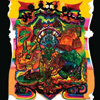 Chicago's Cave have returned with their distinct blend of momentum rock and it is, fittingly, their most fully realized disc yet. Tighter, funkier, spacier and more driving than anything they've done, this is the group at their best, concocting neo-Krautrock grooves that perfectly soundtrack the continued and colorful descent deeper into the new millennium.
Chicago's Cave have returned with their distinct blend of momentum rock and it is, fittingly, their most fully realized disc yet. Tighter, funkier, spacier and more driving than anything they've done, this is the group at their best, concocting neo-Krautrock grooves that perfectly soundtrack the continued and colorful descent deeper into the new millennium.
Mixing equal parts Can and Stereolab (who, of course, took more than a bit from Can themselves) with a grooving and cruise-worthy psychedelicism propagated by the likes of Funkadelic, Cave manage to sound at once immediately familiar and entirely original, a trait uncommon in today's increasingly oversaturated music landscape. Where many bands seem to be loosening their belt of late however, Cave is continually tightening, forging their jams into focused demonstrations of their collective potential.
Where Cave stand out is in the band's ability to do this without ever losing the intricacies and feeling afforded to in-the-moment creation. Rather than sterilizing their sound into a palatable and time-wary take on the extended, horizon-minded style they practice, the group takes full advantage of both studio and approach to craft each piece into a work the form of which only elevates the group's output.
Such is clear from the very opening, when the rich guitar line of "Gamm" is built from the ground up into a thudding instrumental. After a patient intro, the unit explodes into pure energy, each instrument contributing to the throb and shape of the whole. No note is superfluous here, and the focus gives the piece an even clearer trajectory. The following "Made in Malaysia," with its hyper synth lines and clacking drum work, fuses a nearly punk chant with an absolutely undeniable and deranged riff whose effect is garnered from the construction of the lines themselves rather than the overall effect. This is an immensely precise spaciness being conjured.
Elsewhere, the group displays the subtle mastery of form they have. The dancey funk of "Encino Men" emanates outward while the brooding post-punkisms of "Requiem for John Sex" built towards a kind of post-rock vocabulary that eschews any sense of wanky self-indulgence in favor of pure group energy wielding. The result is a special disc that easily represents the strongest statement from this group yet. Great material and great production rarely coalesce in such a clear and fertile vision as this.
samples:
Read More
- Administrator
- Albums and Singles
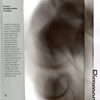 Pimmon's Paul Gough has made a career out of constructing dense and complex ambient soundscapes. On this, his first full-length in five years, he shows no signs of rust and delivers a headphone album of striking depth and vibrancy.
Pimmon's Paul Gough has made a career out of constructing dense and complex ambient soundscapes. On this, his first full-length in five years, he shows no signs of rust and delivers a headphone album of striking depth and vibrancy.
Preservation
I recently learned that Paul Gough began making experimental music in 1982 after being inspired by fellow Aussie Tom Ellard's criminally underappreciated Severed Heads, which immediately gave me a favorable disposition towards him. Not that he needs that, of course, as he seems to have been doing quite well before acquiring my goodwill. Unusually, however, he has only been releasing his computer-based abstract experimentations for the last decade (aside from very limited self-released cassettes) and has a reputation for being somewhat reclusive, though he has collaborated with some well-known folks like Christian Fennesz and enjoys a healthy degree of international renown. I have also read that Gough hates bios, so I guess I will elaborate no further (in case he reads this). I don't want trouble.
"Come On Join The Choir Invisible" commences the proceedings with a ghostly mass choral drone, which is quite striking but regrettably fails to evolve into much of anything. I will give Gough the benefit of the doubt here and assume that it is meant only as an introduction rather than a complete work, as the following track ("Evil Household Ceremony") is much more ambitious and fully realized. Its foundations are somewhat mundane (a pulsing, wavering drone and a buried repeating melodic loop), but a chaotic blizzard of electronic blurts and whizzes rages all around it and Gough's singular production abilities make for a very engaging headphone experience.
Notably, those first two tracks illustrate an odd paradox: Gough's studio wizardry often transforms even somewhat pedestrian material into something alive and attention-grabbing, yet he occasionally fails to exploit his more inspired moments to their full potential. That said, Gough gets absolutely everything right with the haunting and near-perfect "It Will Never Snow In Sydney", which is very similar in tone to Angelo Badalamenti's more unsettling soundtrack work for David Lynch (but far more complex). Menacing low-end synths combine with heavily reverbed and echoed voice snippets, thick drones, and mangled swells to create an atmosphere of singularly haunting disquietude. Then an unexpected psychedelic menagerie of shifting digital frogs (or something) drifts into the mix and it stops being near-perfect and enters the realm of flat-out amazing.
Pimmon nails it again with crackling and roaring slow-motion melancholy of "Hidden," but "Sydney" largely eclipses all the surrounding tracks and causes them to seem pale and somewhat anticlimactic by comparison. That is not to say they are not enjoyable- it's just that Gough never again achieves such a brilliant convergence of studio mastery and songcraft. Smudge Another Yesterday is a vibrant, complexly layered work that is quite gratifying even during its least impressive moments when listened to attentively. Gough is a staggeringly skilled and meticulous producer that achieves improbable clarity amidst elephantine density and elevates panning into an art form, so it is probably unreasonable to expect his musical vision to consistently reach similar heights. This is the work of an extremely purposeful and patient man at the peak of (most of) his powers.
Samples:
Read More